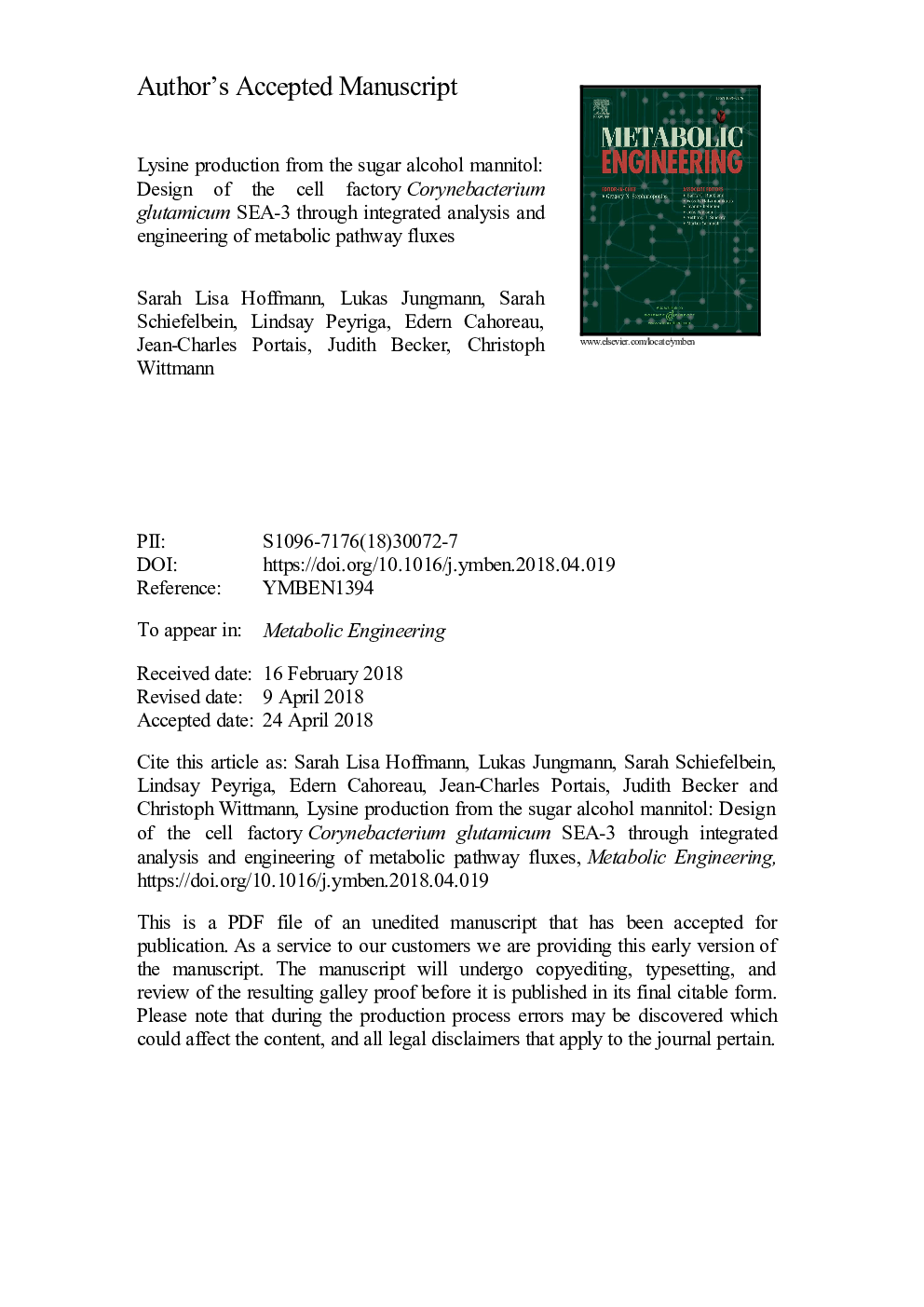| کد مقاله | کد نشریه | سال انتشار | مقاله انگلیسی | نسخه تمام متن |
|---|---|---|---|---|
| 6494105 | 1418332 | 2018 | 52 صفحه PDF | دانلود رایگان |
عنوان انگلیسی مقاله ISI
Lysine production from the sugar alcohol mannitol: Design of the cell factory Corynebacterium glutamicum SEA-3 through integrated analysis and engineering of metabolic pathway fluxes
دانلود مقاله + سفارش ترجمه
دانلود مقاله ISI انگلیسی
رایگان برای ایرانیان
کلمات کلیدی
MacroalgaeNADPH13CMetabolic flux analysis - تجزیه و تحلیل شار متابولیکSeaweed - جلبک دریاییElementary flux mode - حالت شار اولیهBiomass - زیست توده یا بیومسFructose - فروکتوز Fructokinase - فروکتوکینازLysine - لیزینOxidative pentose phosphate pathway - مسیر پوسیدگی فسفات اکسیداتیوglyceraldehyde 3-phosphate dehydrogenase - گلیسرولیدید 3-فسفات دهیدروژناز
موضوعات مرتبط
مهندسی و علوم پایه
مهندسی شیمی
بیو مهندسی (مهندسی زیستی)
پیش نمایش صفحه اول مقاله

چکیده انگلیسی
The amino acid lysine is among the world's most important biotechnological products, and enabling its manufacture from the most attractive new materials is an ever-present challenge. In this study, we describe a cell factory of Corynebacterium glutamicum, which produces lysine from mannitol. A preliminary mutant C. glutamicum SEA-1 obtained by the deletion of the mannitol repressor MtlR in the glucose-based, lysine-producing strain C. glutamicum LYS-12 produced only small amounts of lysine. This limitation was due to a significant accumulation of fructose and a limited NADPH supply, which caused a low flux of only 6% into the oxidative pentose phosphate (PP) pathway. Subsequent expression of fructokinase slightly increased production but failed to substantially redirect the flux from the Emden-Meyerhof-Parnas (EMP) pathway to the PP pathway. This suggested the design of C. glutamicum SEA-3, which overexpressed the NADP-dependent glyceraldehyde 3-phosphate dehydrogenase GapN from Streptococcus mutans and coupled the EMP pathway flux to NADPH formation. When grown on mannitol, the SEA-3 strain had a lysine yield of 0.24â¯molâ¯mol-1 and a specific productivity of 1.3â¯mmolâ¯g-1 h-1, approximately 60% and 75% higher, respectively, than those of the basic producer SEA-1. A computational pathway analysis revealed that this design would potentially enable a lysine yield of 0.9â¯molâ¯mol-1, providing room for further development. Our findings open new avenues for lysine production from marine macroalgae, which is farmed globally as an attractive third-generation renewable resource. Mannitol is a major constituent of these algae (up to 30% and higher) and can be easily extracted from their biomass with hot water.
ناشر
Database: Elsevier - ScienceDirect (ساینس دایرکت)
Journal: Metabolic Engineering - Volume 47, May 2018, Pages 475-487
Journal: Metabolic Engineering - Volume 47, May 2018, Pages 475-487
نویسندگان
Sarah Lisa Hoffmann, Lukas Jungmann, Sarah Schiefelbein, Lindsay Peyriga, Edern Cahoreau, Jean-Charles Portais, Judith Becker, Christoph Wittmann,